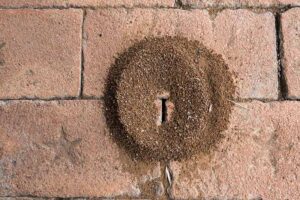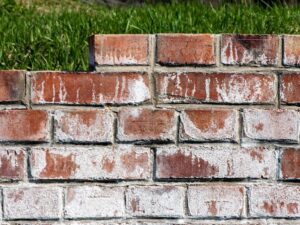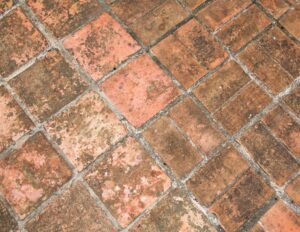Creating a stunning and durable hardscape involves more than just choosing the right pavers for your walkways, patios, or driveways. The material you use to fill the gaps between the pavers plays a crucial role in both the aesthetic appeal and structural integrity of your outdoor space. So what to put between pavers?
This article explores various options for filling the gaps between pavers and provides insights into selecting the most suitable material for your specific needs.
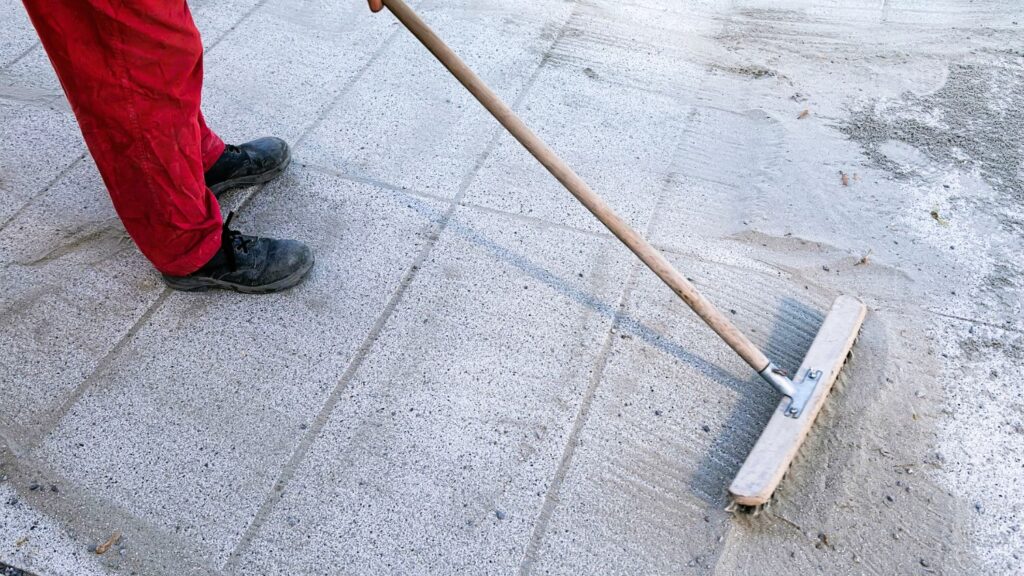
Jump to:
What to put between pavers?
Traditionally in the hardscape industry, you have 3 options of what to put between pavers: traditional sand, polymeric sand or gravel.
Putting “nothing” can also be considered as an option for a very specific scenario, so you can add it as well to make for 4 options of what to put between pavers.
But which one should you choose? What would be the best choice for your scenario? That’s what we are going to answer next when we talk about each specific element.
Traditional and polymeric sand
Traditional sand is the go-to material for many people when it comes to paver installations, especially those without much hardscape experience. But although is not a bad choice by any means, it is also the least optimal choice.
A traditional paver installation required sand to be poured into the grouts between the pavers. The goal is to keep the pavers together and avoid shifting as much as possible.
Traditional sand does not do that very well. Polymeric sand is a much better choice, being that it is designed with that specific purpose.
The upside of using traditional sand is that it is cheaper, but anyone who has ever worked with hardscape can tell you that quality beats what is cheaper in the long run.
One of the key reasons for choosing sand, either traditional or polymeric, as a filler material is its excellent drainage properties. Sand allows water to permeate through the gaps between pavers, preventing the accumulation of water and potential damage to the underlying foundation.
This feature is particularly important in areas with heavy rainfall or where proper drainage is crucial to maintaining the longevity of the paved surface.
Another notable advantage of using sand is its simplicity of installation. The process involves spreading the sand evenly between the pavers and brushing it into the gaps. This straightforward installation method makes it an accessible option for both professional landscapers and DIY enthusiasts.
Polymeric sand specifically is also very good at inhibiting the growth of weeds and unwanted vegetation between pavers. This not only enhances the aesthetic appeal of the paved area but also reduces the need for constant weeding and maintenance.
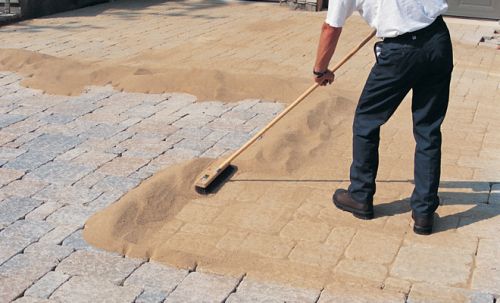
Gravel or “nothing”
Traditional and polymeric sand are reserved for traditional paver installations. But what about non-traditional installations? What are they even?
By non-traditional installations, we mean permeable paver installations. These installations are build to allow water to pass through the grout lines between the pavers.
Filling them with sand would defeat this purpose, and that’s where gravel (or nothing) comes in.
Gravel and crushed rock are widely used for permeable paver installations, in some cases even used for installations that allow for the filtering of water. They mimic the way that natural land would absorb water, allow for an installation that is much better for the environment.
Beyond its drainage prowess, gravel exhibits remarkable resistance to erosion, ensuring the long-term stability of your outdoor surfaces. This quality is particularly valuable in regions prone to heavy rainfall or where soil erosion is a concern, as it helps maintain the integrity of your landscape design.
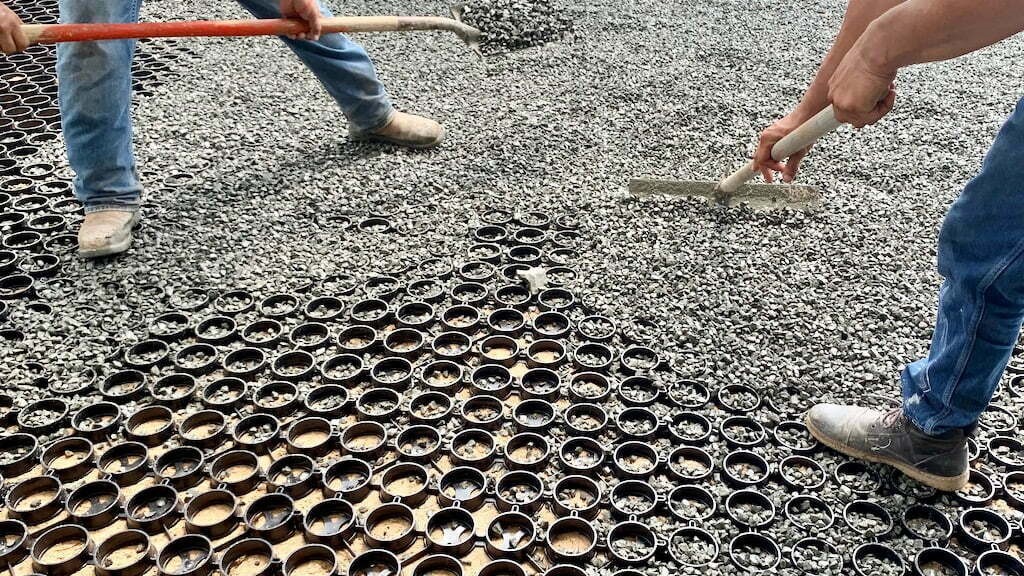
But there is a way to put actual land between the pavers instead of mimicking it, and those are the installations where nothing is between the pavers.
This is reserved for permeable paver designs that have bis spaces between them, allowing for the planting of grass between them. When the grass grows to the optimal point, it creates a really stunning look, rendering the installation not only effective, but also visually pleasing.
However, it’s important to consider the maintenance aspect of this landscaping choice. While grass ground cover can thrive in the gaps between pavers, periodic attention may be required to prevent overgrowth.
Regular trimming or pruning can help maintain the balance between the soft vegetation and the hardscape, ensuring a polished appearance without sacrificing the natural charm.
Moreover, selecting the right type of grass for your specific climate and soil conditions is crucial. Some varieties are more resilient and better suited to certain environments, requiring less maintenance in the long run.
Consulting with a local horticulturist or landscape expert can provide valuable insights into the best choices for your particular area.
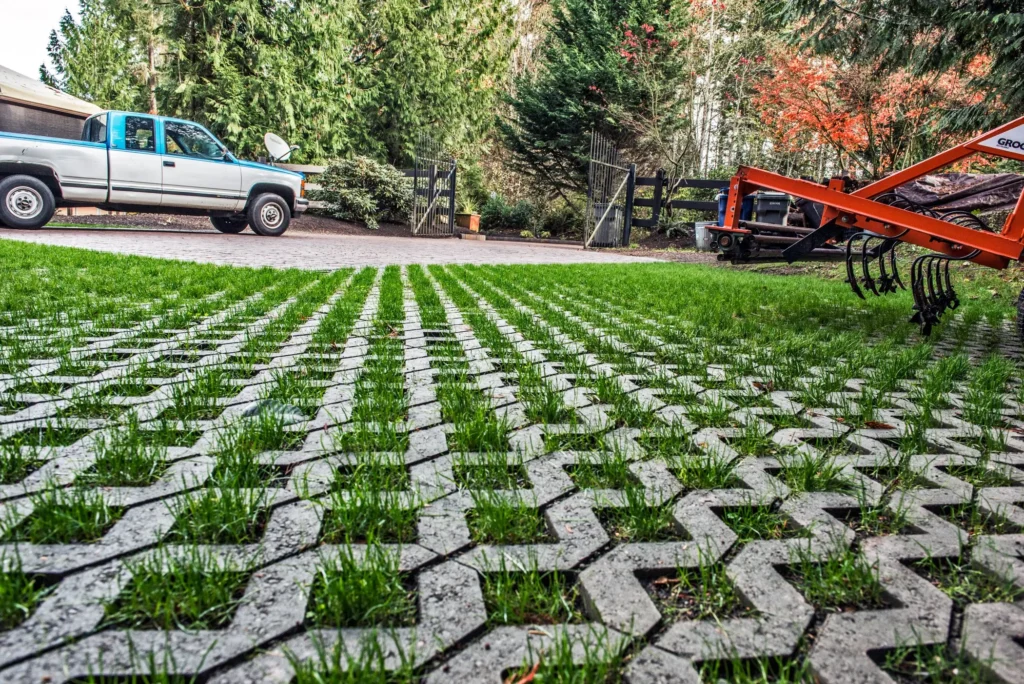
What to put between pavers: how to make the best choice?
Well, surprisingly, this choice is in fact not as simple as it seems.
Paver installations using sand, gravel or “nothing”, are wildly different from each other, and it will all come down to what exactly are you trying to achieve with your project and what kind of installation your setting is prepared to receive.
That’s why DIY is so dangerous in hardscape, because thing only look simple, when in fact they can get really complicated and quickly get out of hand for a person without experience.
Hiring professional hardscape contractors to assess your situation is the best way to make sure you end up with a paver installation as perfect as possible.
We here at JS Brick have worked on countless paver installations over the course of our 23 years of experience in the hardscape business, and we can safely say that the choice of what to put between pavers is never a trivial one.
So if you are around our area of activity, the Sarasota County, in FL, don’t hesitate to call us so we can start helping you with your project today.

